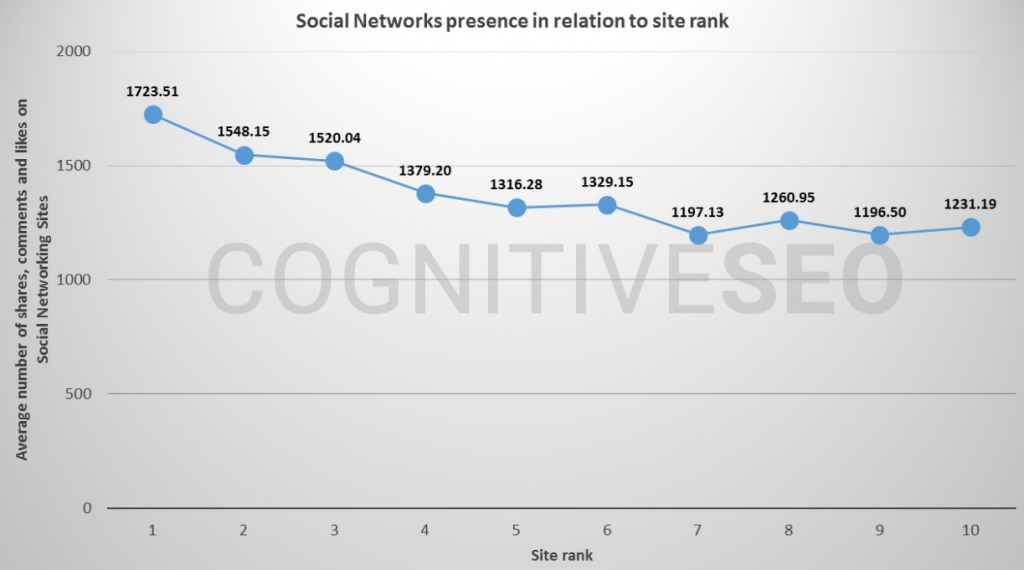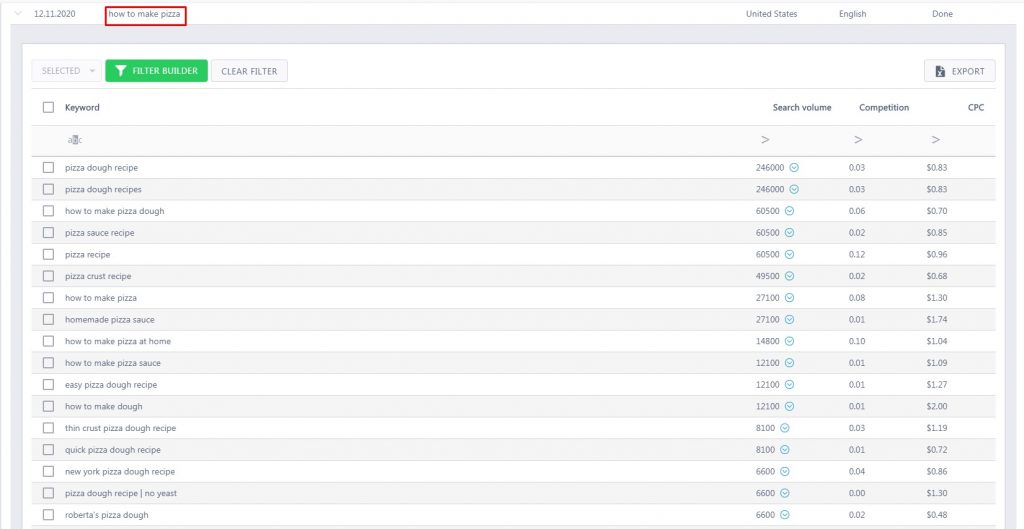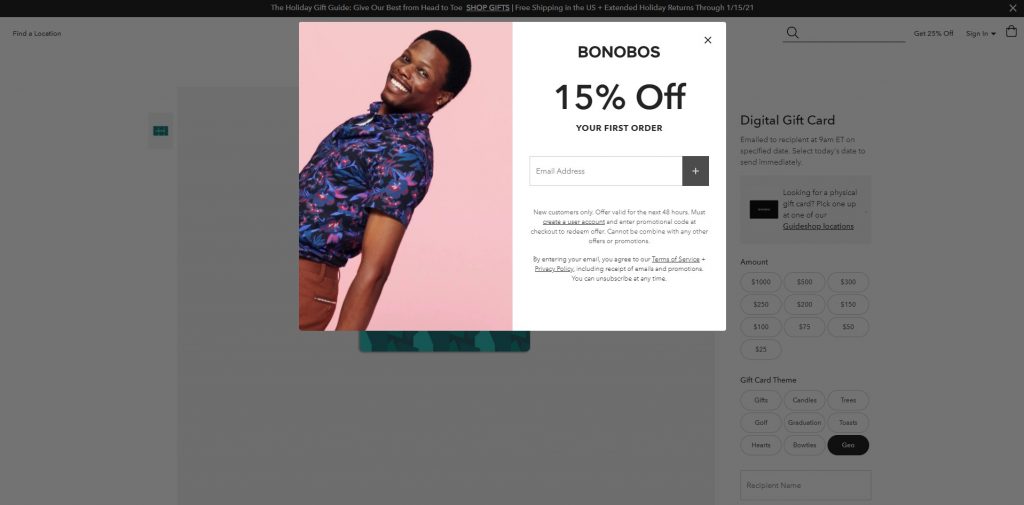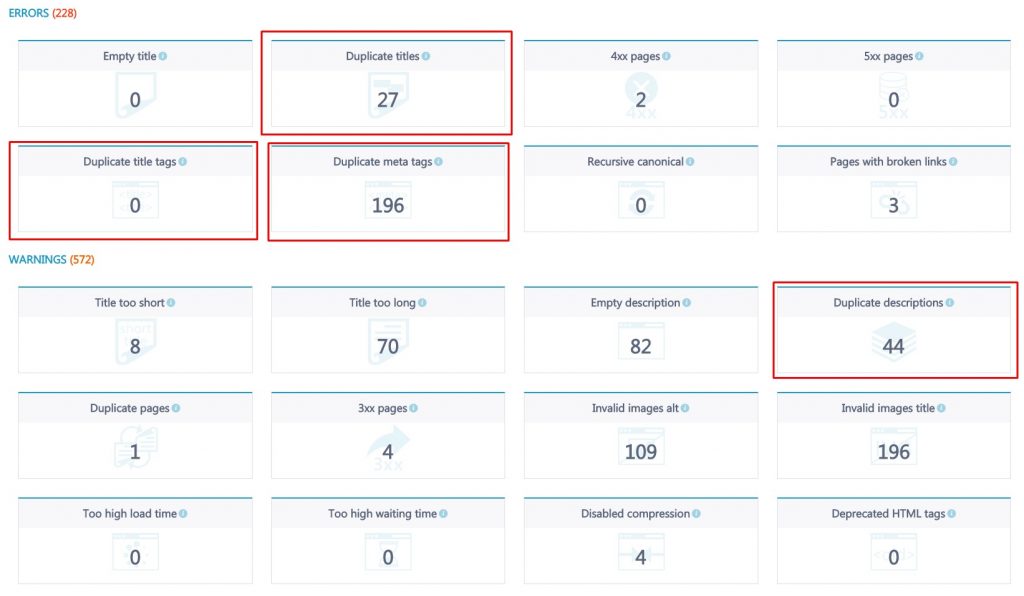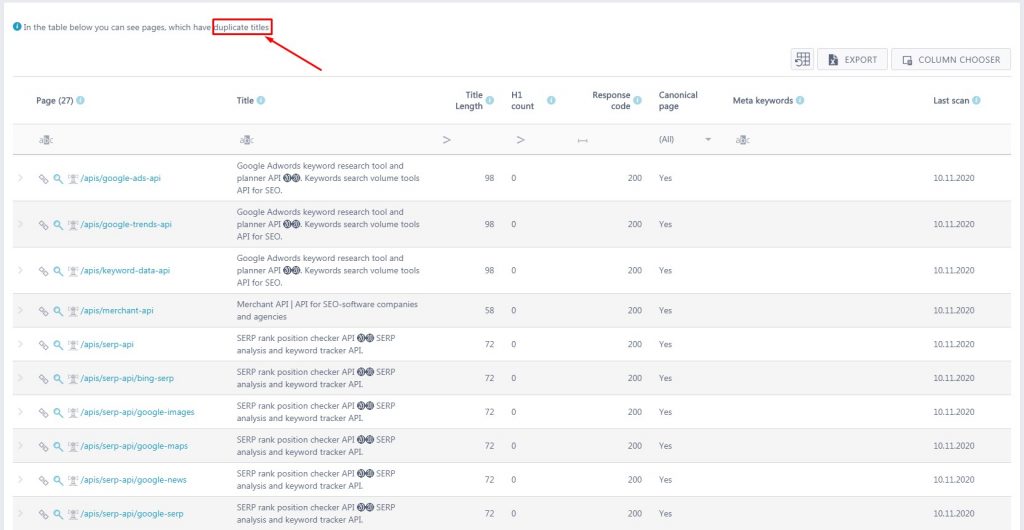5 Harmful SEO Myths That Are Destroying Your Optimization Strategy
13 November 2020 Leave a comment ALL-HANDS SEO

SEO is shrouded in mystery. Like the real world, digital space is rich in myths people believe in. While many of them are just innocent nonsense, there are plenty of harmful beliefs that may screw your website optimization process. If you follow them, you will spend time, money, and energy doing the wrong things. And that is definitely not what you want.
In this blog post, we’ll cover five of the most common SEO myths people usually fall for. We will try to understand why many individuals believe in them and debunk them one by one.
#1 Social signals impact rankings
Many SEOs believe social signals (likes, shares, mentions, and comments) may impact website rankings. The first reason is common sense: if some content gains lots of social media shares, it’s not far-fetched to suggest people like it and find it interesting and helpful. Google should be looking at social signals to determine the quality of content and rank it accordingly, right?
The second reason — some studies show a connection between social shares and rankings. CognitiveSEO conducted a study on 23 million social signals coming from Facebook, Google+, Pinterest and LinkedIn. Here is what they found out:
As you can see, the higher a website is ranking, the more social network presence it has. No wonder so many people believe social signals are a ranking factor. As a result, they invest money, time, and effort, hoping to make their content go viral on social media. But in most cases, it doesn’t provide any benefit.
Why it’s a myth
We believe the study mentioned above doesn’t prove anything for three reasons:
- The study didn’t consider other ranking factors (for example, backlinks). Social media shares usually attract some organic backlinks that may impact rankings.
- Social signals can be easily manipulated. Google can’t tell if shares, likes, comments, and mentions come from fake or real accounts.
- The relation mentioned in the study isn’t clear. It’s unknown whether a website is ranking high because it has many social shares, or it has many social shares because it’s ranking high.
Also, John Mueller confirmed social signals are not a direct ranking factor. Someone asked him if social signals had an impact on organic rankings in Google. He replied:
“Not directly, no. So it’s not that there is any kind of a ranking effect there. Social networks also have a no-follow on the links that they kind of provide when they post this content. So it’s not the case that it would give you any kind of a ranking boost there.”
However, he also said social posts showed up in search results. They can rank for your brand keywords and give your website more presence. From this point of view, social signals may be helpful for your business. However, we can’t consider them a ranking factor.
Our verdict: debunked
Social signals are not a ranking factor. They are too easy to manipulate: you can buy thousands of them on Fiverr just for a few bucks. That’s why it would be foolish if Google used social media shares to rank websites and determine content quality. However, organic shares are still useful as they can make your website more visible and bring you some extra traffic.
#2 Google uses CTR to rank websites
Because of numerous experiments, states from Google’s employees, and the search engine’s patents, many SEOs end up believing CTR affects rankings. For example, Google’s former Search Quality Chief, Udi Manber, said this:
“The ranking itself is affected by the click data. If we discover that, for a particular query, hypothetically, 80 percent of people click on Result No. 2 and only 10 percent click on Result No. 1, after a while, we figure probably Result 2 is the one people want. So we’ll switch it.”
No wonder people started considering CTR as a direct ranking factor after hearing something like this from Google’s employee. But as you’ll learn right now, you shouldn’t trust Google’s representatives blindly.
We’ve already discussed this topic in the recent article about the impact of user behavior — read it if you want some insights. Let’s jump to what we’ve concluded there.
Our verdict: debunked
CTR doesn’t impact rankings. First of all, CTR is a noisy metric that can be easily manipulated; that’s why Google doesn’t use it to rank websites. Secondly, experiments that proved otherwise were not that clear. Moreover, Search Engine Land conducted a more precise experiment that revealed CTR isn’t a ranking factor. Thirdly, Google representatives keep telling us that the techniques described in their patents are not always used, and they patent them to prevent other search engines from using them.
And the last thing — high CTR may be attributed to a high position in SERP. If this metric was used to determine rankings, it would be extremely difficult to outrank websites ranking on top of search results.
#3 Keyword research and targeting are dead
Google’s Hummingbird update provoked many rumors that keyword research and targeting don’t matter anymore. This update was designed to understand natural language queries and the search intent behind them. Hummingbird allowed websites to rank for the terms associated with the original query and made exact match keywords not so necessary.
For example, if your website is ranking for the “how to make pizza” keyword, it can also be ranking for “how to cook pizza,” even if this query isn’t included in your content.
So why bother performing keyword research and then target them if this smart algorithm can rank your website for the keywords that aren’t even there?
But it’s not like that
First of all, the Hummingbird update didn’t aim to “kill” keyword research and targeting. Moreover, it made the keyword targeting easier than it was. You don’t need to worry about a keyword’s density anymore — all you have to do is produce content that matches users’ intent.
Think of it that way: keyword research didn’t die but changed. After the Hummingbird update, you should focus more on topic clustering than on traditional keyword research.
Topic clustering is the process of linking different pieces of content together so a user can easily find the related information they are interested in. It has some benefits:
- topic clustering makes your website easier to crawl because its structure becomes more apparent to search engines.
- it may improve rankings as Google tends to reward in-depth content;
- it’s good for UX because users can get all the info they need in one place.
To better understand the concept of keyword clustering, let’s get back to our “pizza” example. Say you have an article on how to make pizza. Ask yourself what else your visitors may be interested in.
You can brainstorm some ideas or take them from RankActive’s Keyword Finder tool. Just visit the “Related keywords” section and type in the “how to make pizza” query.
It took less than five seconds, and the tool has already provided us with lots of ideas. As you can see, people interested in making pizzas also search for info on making pizza doughs and sauces. You can use that information to write more articles and then link them together to make your website well-structured and provide the best user experience.
Our verdict: debunked
Keyword research didn’t die – it evolved. Webmasters still perform keyword research for their sites but do it differently. Instead of stuffing one piece of content with a bunch of keywords, they find related terms for a particular topic, create more articles, and then link them together. Providing in-depth information engage their websites’ visitors and ensure they get the best experience.
#4 Pop-ups will prevent your website from ranking higher
Some people believe pop-ups are horrible because they divert users from reading a website’s content and may result in bad UX. Since Google has rolled out its interstitial update, many digital marketers became afraid of using such ads and started avoiding them to keep their rankings high. And as you’ll learn right now, it’s not unreasonable.
What the interstitial update is about
Interstitials are pop-ups that show up right after a user lands on a particular page or while they’re reading its content. They cover a significant part of the content, forcing a visitor to look through the ad material.
According to Google:
“Pages that show intrusive interstitials provide a poorer experience to users than other pages where content is immediately accessible. This can be problematic on mobile devices where screens are often smaller. To improve the mobile search experience, after January 10, 2017, pages where content is not easily accessible to a user on the transition from the mobile search results may not rank as highly.”
So basically, Google can now scan your webpages for interstitials and rank them lower if they make your content less accessible.
However, pop-ups are still a great marketing tool. According to Blogmarketing Academy, pop-ups have decent CTRs of approximately 2% — higher than other types of ads. Also, Copyblogger discovered that by using pop-ups, you might significantly boost email list opt-ins.
So should we stop using them because of the interstitial update? The answer is no.
Pop-ups won’t prevent your website from ranking higher if you use them right
Google takes action against the websites with “intrusive” interstitials, and not all pop-ups are that. As long as the ads you are using don’t make your content less accessible, it’s totally fine.
If you want to implement pop-ups without negatively affecting your SEO, consider this:
- don’t make pop-ups appear right after a user landed on your website;
- make sure your ads occupy a reasonable amount of screen space;
- make your pop-ups easy to close;
- never use new-window ads that open when a user clicks somewhere;
- ensure your pop-ups load fast enough.
If you follow this simple checklist, Google won’t consider the pop-ups on your site intrusive and won’t rank it lower.
Our verdict: debunked
Pop-ups are an effective marketing instrument, so we see no reason to give up on them. As long as you use them right, your website will be fine. Make sure your ads don’t disturb visitors’ experience, and your site’s rankings won’t drop.
#5 Your website can get penalized for duplicate content
Some people think there is a penalty for duplicate content. And that’s partially true. You see, there are two types of duplicate content, and that causes confusion:
- Duplicates within one domain.
- Duplicate content across multiple domains (it’s also called copied content).
While the first type might be acceptable, the second sometimes leads to a penalty, so you have to be careful when optimizing your site.
Let’s look at each type of duplicate content in more detail.
Duplicates within one domain
Your website can’t get penalized for duplicate content within one domain. Google confirmed it back in 2008 and still confirms it as users keep asking them questions regarding this topic.
Duplicate content is acceptable in many cases: for example, you may have different URLs on the same domain that point to identical content. As long as you use the “rel=canonical” tag to show the search engine what page to crawl, it’s totally fine. Even if you forget about this tag, Google won’t penalize your site but choose only one version of a page to show in search results.
While duplicates within one domain most certainly won’t get you a penalty, sometimes it can cause several SEO issues, such as:
- showing undesirable URLs in search results;
- keyword cannibalization;
- wasting crawl budget;
- leading to backlink dilution (when the same content is available at many URLs, each of those URLs may attract backlinks).
That’s why you should track how much duplicate content your site has and fix the issues worth fixing. To do that, try RankActive’s Site Auditor tool. Go to Overview to see how many identical titles, descriptions, title tags, and metatags your site has.
You can then click on any parameter to see more specific information.
That way, you’ll be able to track duplicate content issues automatically and fix them when you have time.
Duplicate content across multiple domains
The search engine might penalize websites for duplicate content across multiple domains. Here is what Google stated on this topic:
“There are some penalties that are related to the idea of having the same content as another site—for example, if you’re scraping content from other sites and republishing it, or if you republish content without adding any additional value. These tactics are clearly outlined (and discouraged) in our Webmaster Guidelines.”
So “additional value” is the key word here. If you are copying someone else’s content or republishing it without providing additional value, these practices may result in a penalty as they violate Webmaster Guidelines. Google may not always penalize a whole site but exclude the pages with duplicates from search results.
However, if you’re just quoting somebody or copying parts from someone else’s content but providing additional value, it’s OK. You won’t get a penalty for that.
Our verdict: confirmed
A penalty for duplicate content is not a myth. At least, partially. You can get this penalty if you are copying someone else’s content without providing any additional value. Don’t do that, and your site will be fine.
To sum it up
Believing in the five myths listed above can play a dirty trick on your SEO strategy.
In this article, we concluded that:
- Social signals are not a direct ranking factor. Any webmaster can manipulate them, so Google doesn’t take them into account when ranking websites. However, having organic social shares is a good thing as they increase a website’s visibility and gain some extra traffic.
- Google doesn’t use CTR as a ranking signal. This metric is too noisy and easy to manipulate, just like social signals.
- The Hummingbird update didn’t “kill” keyword research and targeting. It just changed the first and made the second much easier. Keyword research is still the foundation of any SEO strategy.
- Pop-ups won’t prevent your website from ranking higher. To keep your rankings, you need to make sure they’re not distracting your visitors from enjoying your content.
- Your website can’t get a penalty for duplicate content within one domain. However, if you are copying someone else’s works or republishing them without providing additional value, your website may get a penalty.
We hope you enjoyed reading our blog post. If you still believe in one of these myths, stop doing it and be smart about your choices when optimizing websites. And also, make good use of advanced SEO tools as they can make your SEO routine much faster and easier.
Tags: Keyword Finder, RankActive, SEO, seo myths, Site Auditor, top 5 seo myths
Like this article? There’s more where that came from.
- 5 Questions to Ask Yourself Before Paying for Rank Tracking Software
- 5 Serious Mistakes Beginner SEOs Make and How to Fix Them
- Why We Use Google’s New Link Attributes and You Should Too
- Title and Description in 2021: Why Google Rewrites SEOs’ Meta Tags
- What We Should Learn From Google’s “About This Result” Feature


